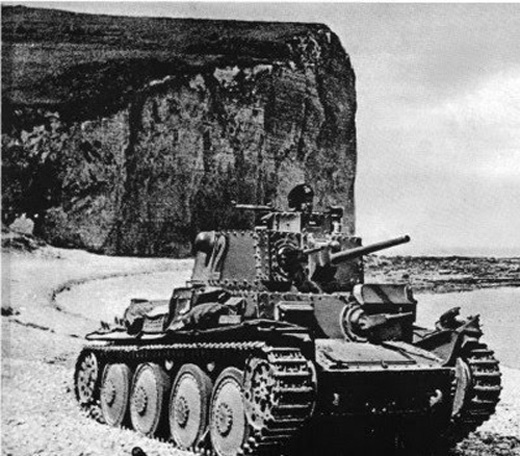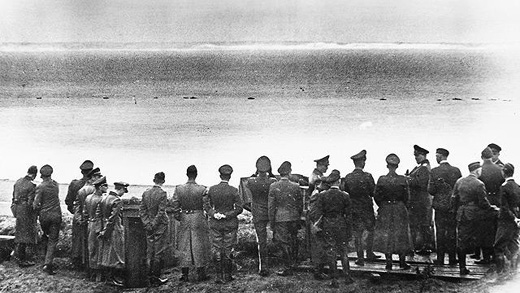Air Operations, Europe
The RAF attack Panzers in the Arras-Cambrai sector; carry out a night raid on the Rotterdam oil storage tanks; and attack German communications at Givet, Dinant and Charleville.
[Battle of the Atlantic
- The Norwegian steamer Deneb (750t), British steamer Pembroke Coast (625t) and British steamer Balteako (1328t) are all badly damaged during a German bombing at Harstad. 11 of the crew of the Deneb are rescued, 2 are lost. She is sunk by gunfire on the 21st. The British destroyer Delight, alongside the Balteako when she is bombed, assists the steamer. 2 cremen are lost on the Pembroke Coast. She is towed out to sea and sunk by gunfire.
- The French tanker Niger (5482t) is sunk off Gravelines by German bombing. The survivors from the tanker are rescued by the French destroyer Cyclone.
- The French steamer Orphelia (6477t) is sunk by German bombing in Boulogne Roads.
- The British steamer Mavis (935t) is badly damaged by German bombing near Calais with the loss of 4 crewmen. She is abandoned about a mile northwest of Number 1 Buoy, Calais.
- The French tug Hercules (216t) sinks on a mine near Calais.
Secret War
(?? or 18th??)Tyler Kent, a cipher clerk in the US Embassy in London, is detained by British police and charged with copying hundreds of confidential documents over a 5-year period. Some of these documents were passed on to Nazi sympathizers and then on to the Italian Embassy in London.
[Western Front
The German armored advance again makes considerable progress. Rommel occupies the heights around Arras. The most spectacular gains are made by Guderian's XIX Corps. Amiens is taken in the morning by 1st Pzr Div and in the evening Abbeville is captured by 2nd Pzr Div despite gallant but ineffectual resistance by the British 12th and 23rd Divs. Advance units even reach the coast at Noyelles. The Germans have advanced 386 km in 11 days and have driven a corridor at least 20 mi. wide from the Ardennes to the Channel. North of this gap is the French 1st Army, the 9 divs of the British Expeditionary Force and the Belgian army. To the south, from west to east, are 4 French armies: the 10th, 7th, 6th and 2nd.
The Germans Reach the English Channel |
 |
Having reached the sea, the Germans have virtually surrounded 45 Allied divs in Flanders and the northeast tip of France. The obvious need is for the British and French to cut through this corridor before its walls can be strengthened to cut off irrevocably the forces to the north. Before his dismissal Gamelin was planning such an attack, but it has been cancelled following his sacking only to be revived now by Weygand. The delay imposed by these changes of mind prevents it from retaining even a slim chance of success.
Germans at the English Channel |
 |
The Führer says the armistice will be signed in the area of Réthondes (where the armistice of 11 Nov 1918 was signed) and that France will have to restore to Germany 'all the territory they have raped from her in the past 400 years'.[MORE]
[